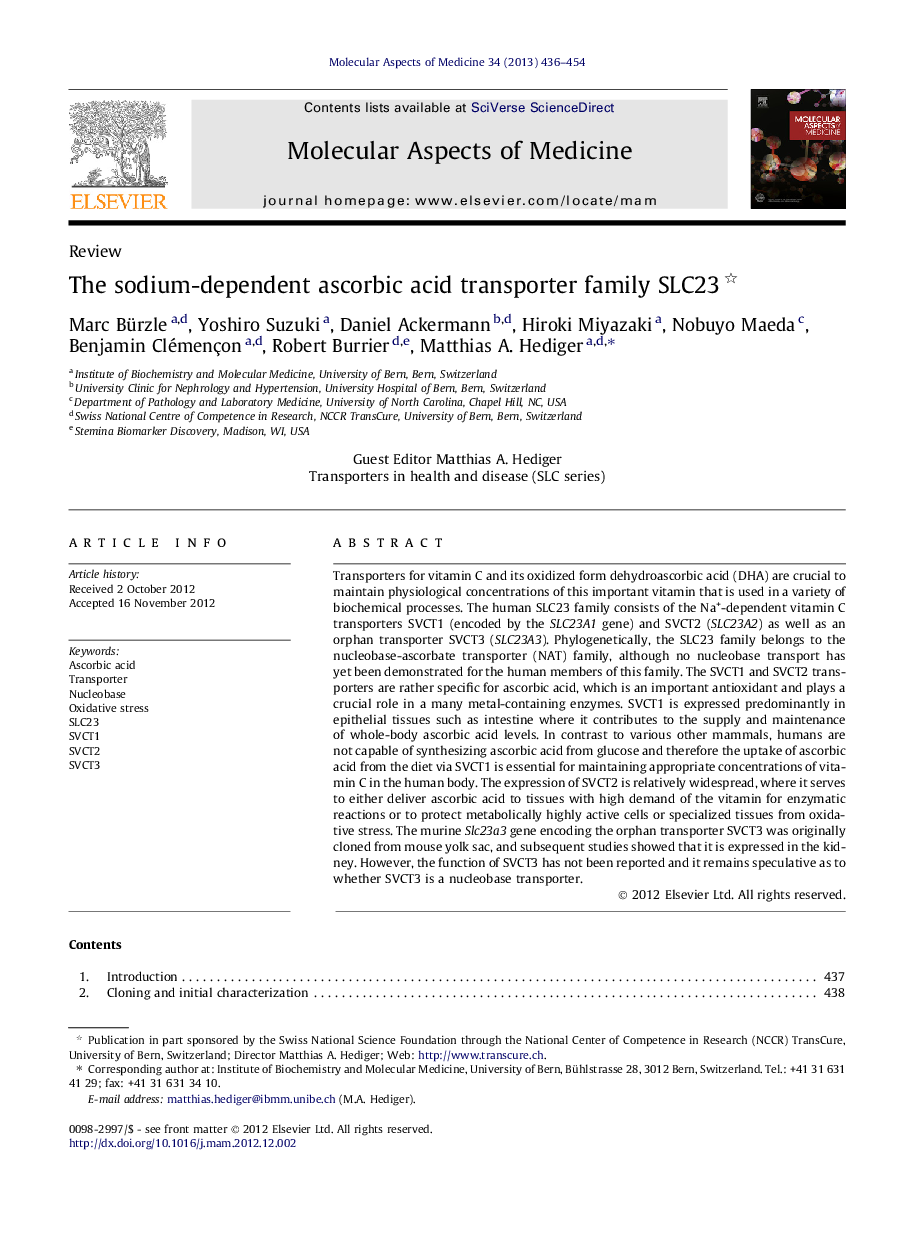| Article ID | Journal | Published Year | Pages | File Type |
|---|---|---|---|---|
| 8341549 | Molecular Aspects of Medicine | 2013 | 19 Pages |
Abstract
Transporters for vitamin C and its oxidized form dehydroascorbic acid (DHA) are crucial to maintain physiological concentrations of this important vitamin that is used in a variety of biochemical processes. The human SLC23 family consists of the Na+-dependent vitamin C transporters SVCT1 (encoded by the SLC23A1 gene) and SVCT2 (SLC23A2) as well as an orphan transporter SVCT3 (SLC23A3). Phylogenetically, the SLC23 family belongs to the nucleobase-ascorbate transporter (NAT) family, although no nucleobase transport has yet been demonstrated for the human members of this family. The SVCT1 and SVCT2 transporters are rather specific for ascorbic acid, which is an important antioxidant and plays a crucial role in a many metal-containing enzymes. SVCT1 is expressed predominantly in epithelial tissues such as intestine where it contributes to the supply and maintenance of whole-body ascorbic acid levels. In contrast to various other mammals, humans are not capable of synthesizing ascorbic acid from glucose and therefore the uptake of ascorbic acid from the diet via SVCT1 is essential for maintaining appropriate concentrations of vitamin C in the human body. The expression of SVCT2 is relatively widespread, where it serves to either deliver ascorbic acid to tissues with high demand of the vitamin for enzymatic reactions or to protect metabolically highly active cells or specialized tissues from oxidative stress. The murine Slc23a3 gene encoding the orphan transporter SVCT3 was originally cloned from mouse yolk sac, and subsequent studies showed that it is expressed in the kidney. However, the function of SVCT3 has not been reported and it remains speculative as to whether SVCT3 is a nucleobase transporter.
Related Topics
Life Sciences
Biochemistry, Genetics and Molecular Biology
Biochemistry
Authors
Marc Bürzle, Yoshiro Suzuki, Daniel Ackermann, Hiroki Miyazaki, Nobuyo Maeda, Benjamin Clémençon, Robert Burrier, Matthias A. Hediger,
